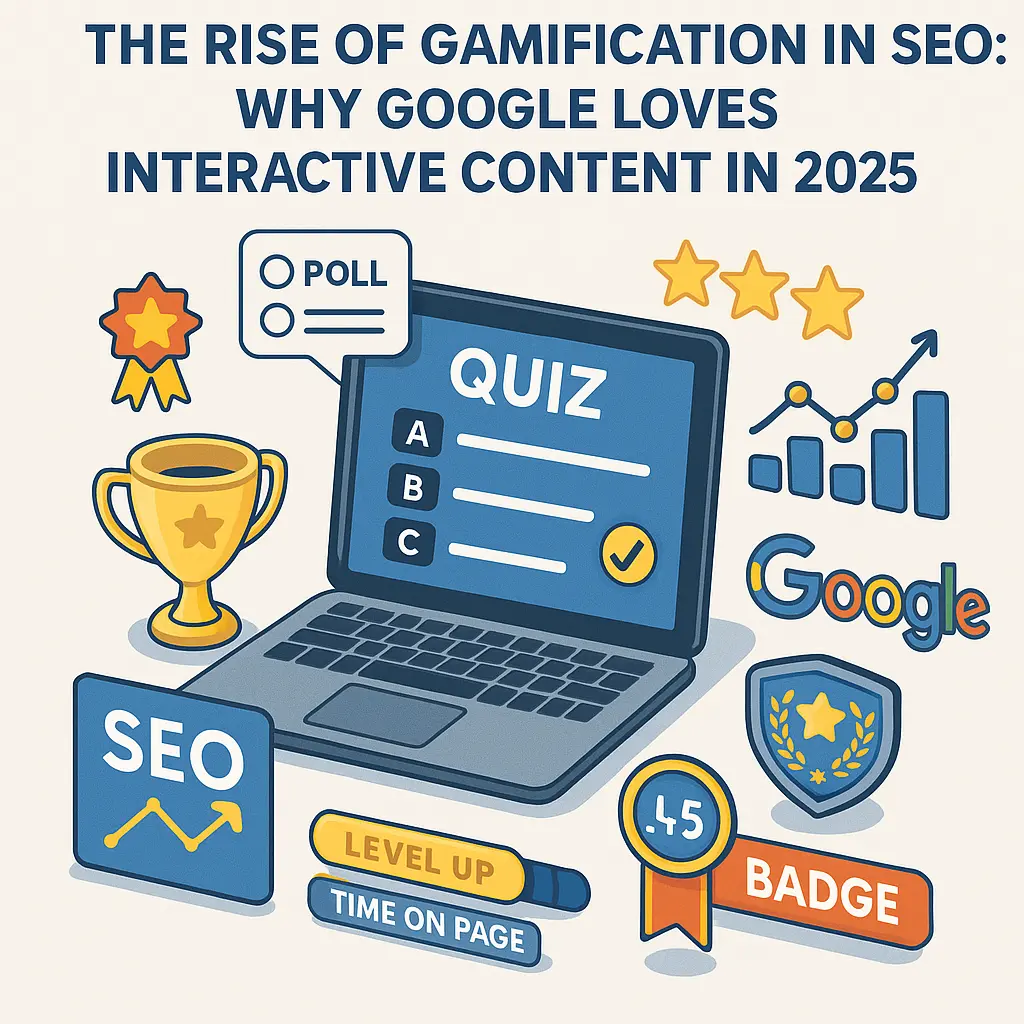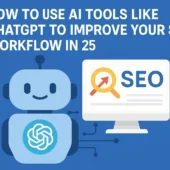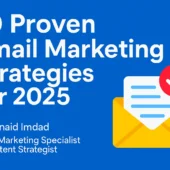By Junaid Imdad, Blogger & Digital Experience Strategist
Let’s be honest, any time Google releases a major algorithm update, it feels like an earthquake in the digital realm. Rankings shift overnight, traffic plummets for some businesses while others suddenly rise from obscurity to page one. Google’s 2025 Helpful Content Update has been no exception. This latest update emphasizes content created for humans, not search engines—rewarding sites that offer real value and punishing those filled with fluff, AI spam, or SEO manipulation.
Google’s Helpful Content Update in March 2025 did exactly what many digital marketers had been both anticipating and fearing. It swept away the last traces of outdated SEO tactics like keyword stuffing, AI-generated filler, and cookie-cutter blog templates, making way for what Google has been hinting at for years: genuinely helpful, human-first content is now the gold standard. This update didn’t just make minor adjustments to the algorithm—it completely reshaped the rules of modern SEO, creating a level playing field for those who value authenticity, depth, and user satisfaction.
Instead of rewarding those who try to game the system, Google is now actively promoting websites that showcase real expertise, clear value, and a sincere intent to assist. Whether you’re in finance, health, tech, education, or eCommerce, the message is crystal clear: quality, relevance, and trustworthiness are the new currency in SEO.
If you’ve noticed your rankings slipping—or if you’re preparing for a potential drop in the coming months—now is the perfect time to reassess your content strategy. Ask yourself: Is my content genuinely serving my audience, or am I just ticking off SEO checkboxes? If you’re still writing for algorithms, this update is your wake-up call to shift gears. Google’s latest changes are a strong reminder that content creators need to stop thinking like machines and start writing like real humans again.
This blog will explain:
- What has changed with Google’s latest update?
- How it fits in with other key algorithms
- What should you immediately fix?
- How can your site recover if it was affected?
What Is Google Helpful Content Update? While this update is not Google’s first attempt at encouraging people-first content creation, it marks their most aggressive move yet in this direction.
Google’s March 2025 Update of their Helpful Content System builds upon previous iterations; however, with stronger AI-enhanced classifiers now in place to detect whether content is truly helpful versus just SEO fluff.
Here’s what’s new and different:
Stronger Signal Weighting
With the Google Helpful Content Update, the pressure to keep your content top-notch has reached new heights. By 2025, helpfulness won’t just be assessed on a page-by-page basis; it’ll be looked at across your whole website. This means that even a few low-quality, unhelpful, or thin pages can put your entire site’s visibility at risk. If your content landscape is filled with generic, keyword-heavy articles that don’t really offer much to users, even your best content could suffer as a result.
On top of that, Google has significantly improved its ability to spot AI-generated content. While AI writing tools can still be handy for drafting and brainstorming, Google now has advanced methods for identifying content that lacks true human insight, depth, and originality. Pages that come off as if they were churned out by machines—generic, repetitive, and lacking unique viewpoints—are being quietly pushed down in rankings or even penalized.
Here’s the hard truth: simply publishing a lot of content doesn’t cut it anymore.
Google Helpful Content Update now measures page-level helpfulness, meaning even well-established websites could experience individual pages losing visibility if they fall short in meeting this standard.
Google’s message to content writers is clear: If your writing doesn’t speak directly to humans, your rankings won’t improve.
How the Google Review Algorithm Affects Kaufentscheidung
With Google Helpful Content Update, the Google review algorithm which specifically targets product reviews and buying guides—has become more prominent than ever before.
This update gives priority to:
- First-hand experience (real usage over generic summaries).
- Credible authorship (representing demonstrated expertise).
- Transparency (honest pros/cons, affiliate disclaimers) is important.
- Original insights (not lifted or spun from top results)
If your reviews sound similar to all others or worse, are automatically generated you should expect a significant decline in rankings.

Google Is Monitoring Multimedia
With Google Helpful Content Update, the scope of content evaluation has expanded far beyond traditional written text. Multimedia elements—especially videos—are now subject to the same level of scrutiny as articles and blog posts. Google is placing increased emphasis on understanding the overall value that visual content brings to users, assessing factors such as topical relevance, production quality, metadata accuracy, and alignment with on-page content.
As part of this shift, Google’s algorithm for flagging inappropriate or unhelpful videos has been significantly overhauled. It’s no longer a matter of isolated content being flagged; now, poor-quality videos can have a direct and measurable impact on a page’s visibility in search results. This applies particularly to video content indexed via YouTube, embedded directly into webpages, or surfaced through discovery platforms like Google Discover.
The implications for content creators and marketers are clear: simply embedding a video isn’t enough. Videos must serve a clear purpose, meet user expectations, and enhance the overall page experience. This includes ensuring that video titles, descriptions, captions, and transcripts are accurate and keyword-relevant, and that the content provides genuine informational or practical value. Failing to meet these standards may result in reduced visibility—not just for the video itself, but for the entire page or even the domain.
In this new landscape, video content is no longer a supporting player—it’s a ranking factor. To stay competitive, brands and publishers must treat video production with the same strategic precision they apply to written content, aligning it closely with user intent, SEO best practices, and overall site trustworthiness.
What does that entail for creators and brands?
Under Google Helpful Content Update, low-quality or misleading videos are no longer just at risk of being flagged—they can actively harm your entire site’s trust score and overall search visibility. This shift underscores the growing importance of video content quality in SEO strategy.
To meet these evolving standards, every element of your video content must be optimized. Video metadata, including titles, descriptions, and tags, should be accurate and clearly aligned with the content’s purpose. Captions must be properly timed and reflect spoken dialogue faithfully, not only for accessibility but also to help search engines better understand context. Additionally, your video must support and complement the surrounding on-page text, reinforcing topic relevance and enhancing the overall user experience.
If video is a core part of your content strategy, it’s essential to prioritize value, accuracy, and user intent from concept to execution. Focus on producing videos that answer user questions, provide genuine insights, and match the expectations set by your headlines and page content. In doing so, you’ll not only maintain compliance with Google’s latest standards but also build deeper trust and engagement with your audience.
How to Respond to Google Algorithm Updates in 2025
Have your traffic levels decreased after March? That doesn’t have to mean disaster all that is necessary for recovery is an efficient, carefully considered recovery strategy.
1. Conduct a Content Audit To start off
To keep up with Google’s 2025 Helpful Content Update and stay ahead of the competition, it’s crucial to dig deeper than just basic optimizations and perform a thorough content audit. This means taking a close look at your entire website with the help of top-notch tools like:
Google Search Console: Use it to analyze impressions, click-through rates, and any indexing issues, helping you spot pages that aren’t performing as well as they should.
Ahrefs or Semrush: These tools can help you find low-value content, gaps in your backlinks, keyword cannibalization, and areas where you can make strategic updates.
Screaming Frog SEO Spider: This handy tool crawls your site to find duplicate content, broken links, missing metadata, and thin pages that might be holding your domain back.
Google Algorithm Checker (or similar platforms): Check if any recent algorithm updates have negatively affected your site’s performance.
These tools are essential for assessing content quality, structure, and engagement signals, making sure that every page on your site meets Google’s current standards—especially the emphasis on user-first, experience-rich, and informative content.
But remember, it’s not just about SEO metrics—take a moment to evaluate whether your content truly helps users solve problems, make informed choices, or learn something new. Figure out what needs to be pruned, merged, or revamped, and start focusing on content that showcases Experience, Expertise, Authoritativeness, and Trustworthiness (E-E-A-T).
- Pages with high bounce rates
- Attract attention by asking: This content provides real help for users? Ultimately, determine whether this page genuinely benefits the visitor?
- Does my content accurately represent my brand’s expertise or just repeat what others say?
- Would I trust this advice as a customer?
- Correct, combine or delete anything which fails the test.
2. Improve Your Site’s Content Architecture
With Google Helpful Content Update, the search engine is becoming increasingly adept at understanding data structures and algorithms, giving sites with clear architecture and structured data a significant competitive edge.
- Implement schema markup for articles, reviews, products and FAQs.
- Group content with topic clusters and internal links.
- Optimize for core website essentials and mobile-first usability.
- An accessible structure benefits both users and search crawlers alike; it forms the core of your Search Experience Optimization (SXO) strategy.
3. Revamp Your Review Content
Reworking review content can be immensely helpful if you work in eCommerce or affiliate marketing.
- No longer do we rely on manufacturer websites for specs.
- Generic “Top 10” lists without testing.
- Reviews with no nuance or context provided
- Focus instead on first-hand use: “I conducted tests myself and here is what I discovered…”
- Evaluated pros and cons systematically; provided photos, video or demos as evidence; reviewed bios of members for clarity of vision.
This approach fits within the guidelines set by Google Fred and Google review algorithms, both of which reward depth and trustworthiness.
4. Drop Outdated SEO Tactics
Even with all the progress in search technology, a surprising number of websites are still hanging on to outdated SEO strategies that stem from older algorithm updates like Google Possum and Fred. They keep fixating on link-building and cramming in location-based keywords. Back in 2017, it might have worked to create clickbait pages stuffed with ads and city-specific backlinks to climb the rankings. But fast forward to 2025, and that tactic isn’t just ineffective—it’s actually harmful.
With the introduction of the Google Helpful Content Update, the game has completely changed. Google’s algorithms now employ sophisticated classifiers that assess behavioral signals, user experience (UX) design, and content engagement to determine the real quality of a page. It’s no longer just about the number of backlinks you’ve amassed or how many keywords you’ve crammed into your headlines.
In this new era, Google is really asking:
Are users sticking around on your page because they find it genuinely engaging?
Does your content offer real value and insightful information?
Is your site designed with the user’s needs and journey at the forefront?
The emphasis has shifted from manipulation to authenticity, usability, and helpfulness. If your content doesn’t genuinely address user needs or seems more tailored for bots than for real people, you’re at risk of losing visibility—regardless of how impressive your backlink profile may be.
SEO in 2025 is all about aligning with user intent, building trust, and providing value—not clinging to the remnants of outdated search trends.
What Should Your Focus Be Going Forward? Here is your new playbook for remaining visible and valuable in an age of artificial intelligence and helpful content:

Acknowledging E-E-A-T [Electronic Environmental Affairs and Test], this still matters more than ever:
- Experience (Have you lived it?)
- Expertise (Do you understand what you’re discussing?)
- Do others trust you? Authoritativeness (Do others trust you?).
- Trust (Do you disclose, cite and remain honest?)
Engage Deeply
In today’s content landscape, simply publishing frequently isn’t enough to make a mark. Sure, consistency is important, but cranking out shallow, surface-level posts just to stick to a content calendar won’t win over your audience—or Google’s algorithms. The real magic happens when you focus on depth, insight, and originality.
Instead of chasing quantity, consider pivoting your strategy to create fewer, but richer, well-researched, and thoughtfully crafted pieces. These in-depth articles offer genuine solutions, meaningful analysis, and unique viewpoints that your readers won’t easily stumble upon elsewhere.
By 2025, search engines have become much better at spotting quality content. They now favor pages that go beyond the basics, showcasing a solid understanding of the topic, incorporating expert opinions, and genuinely adding value to the discussion.
So, before you hit “publish,” take a moment to ask yourself:
- Make evergreen guides using long form content and design tools
- Focus on one topic per post.
- Regularly update older content.
- Imagine Yourself As the User
Think like the end user when writing content – consider what YOU would want when searching the query in Google, this approach is essential in recovering from algorithm updates.
Final Thoughts:
Let’s clear the air: the 2025 Helpful Content Update isn’t here to punish your website or mess with your rankings. Contrary to what some might think, Google’s goal with this update isn’t to hand out penalties—it’s all about making things better for users. This algorithm update is simply shifting the focus to content that truly serves its audience. If you’ve noticed a drop in your rankings, it’s not some random punishment; it’s because Google is now prioritizing content that delivers real value over content that just ticks off SEO checkboxes.
At its heart, this update is about rewarding websites that genuinely help users tackle real issues, make informed choices, and learn something worthwhile. Whether it’s a how-to guide that simplifies a complicated task or a detailed comparison that aids a buyer in making a confident decision, the message is clear: Google wants to uplift content that puts people first.
The days of relying solely on keyword density and clever on-page tricks to snag a top spot are long gone. In 2025, the algorithm is digging deeper—looking at clarity, relevance, originality, and helpfulness. This means your content needs to be crafted with purpose, grounded in real expertise or experience, and organized in a way that makes it easy for users to find what they’re looking for.
So, if you’re noticing some ups and downs in your search visibility, think of it as a signal rather than a punishment. Take a good look at your content. Ask yourself:
Does this piece actually help someone?
Does it offer fresh insights, or is it just rehashing what’s already out there?
Would a real person find this genuinely useful, or would they click away in seconds?
Keep in mind: Google isn’t against you—it’s on the side of the user. And if your content aligns with that, then you’re in good standing with the algorithm.
If you also want to get info about Gamification in SEO, simply click on it.

This strategy entails less about gaming the system and more about playing for long-term success.
If your site took a hit recently, take it as an opportunity to improve content that aligns with Google’s mission of organizing information into useful forms and making it available to everyone.
Since 2025 is all about useful content, winning content must provide solutions.
By Junaid Imdad, Blogger & Digital Experience Strategist




What E-E-A-T Means for SEO in 2025 - Devitcity
[…] Google E-E-A-T Algorithm in 2025 […]
2025's UI/UX Trends: What's Hot in Web and App Design - Devitcity
[…] you implement these UI/UX trends for 2025, make sure that innovation meets empathy. Technology should serve people not the other way […]
How to Optimize Your Website for Mobile-First SEO in 2025 – Boost Speed, UX & Rankings - Devitcity
[…] Also read: Google’s 2025 Helpful Content Update Explained […]
FlexClip Review 2025: The Best AI Video Editing Tool for Marketers and Beginners - Devitcity
[…] how Google’s 2025 Helpful Content Update prioritizes content that’s visually rich and […]